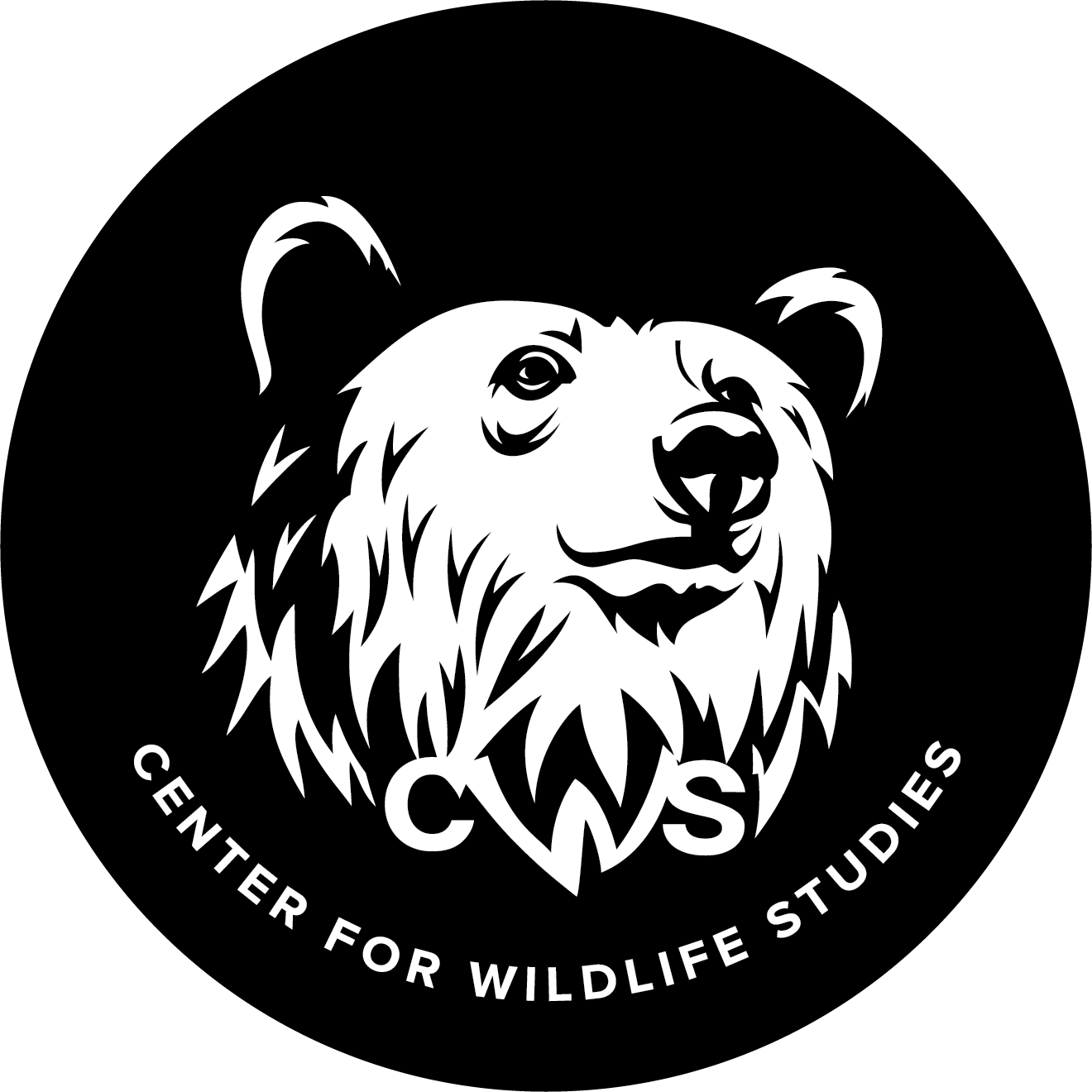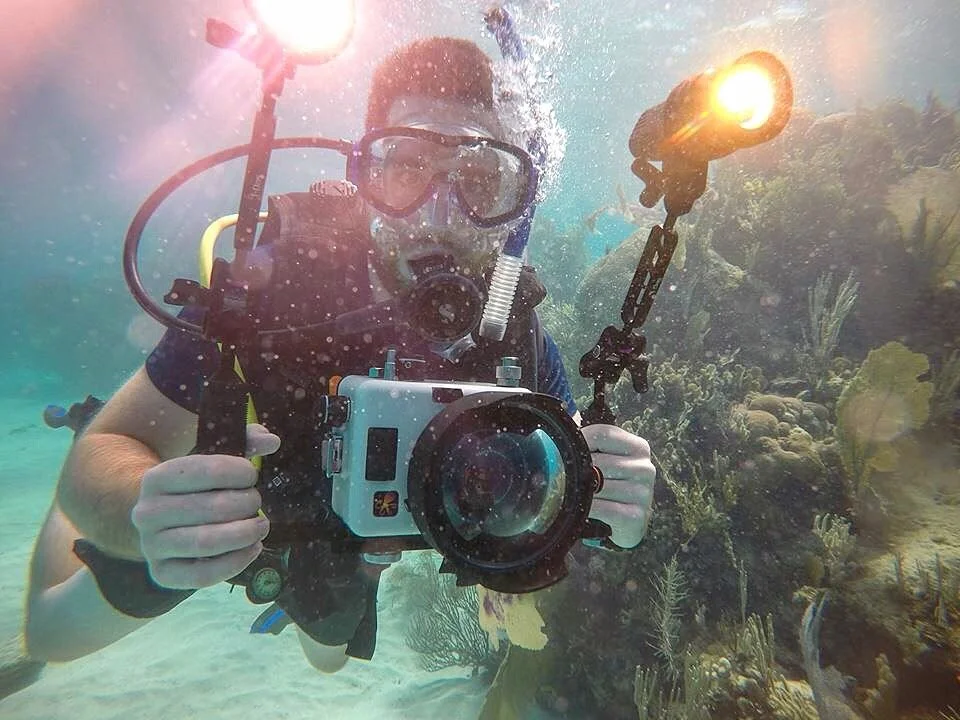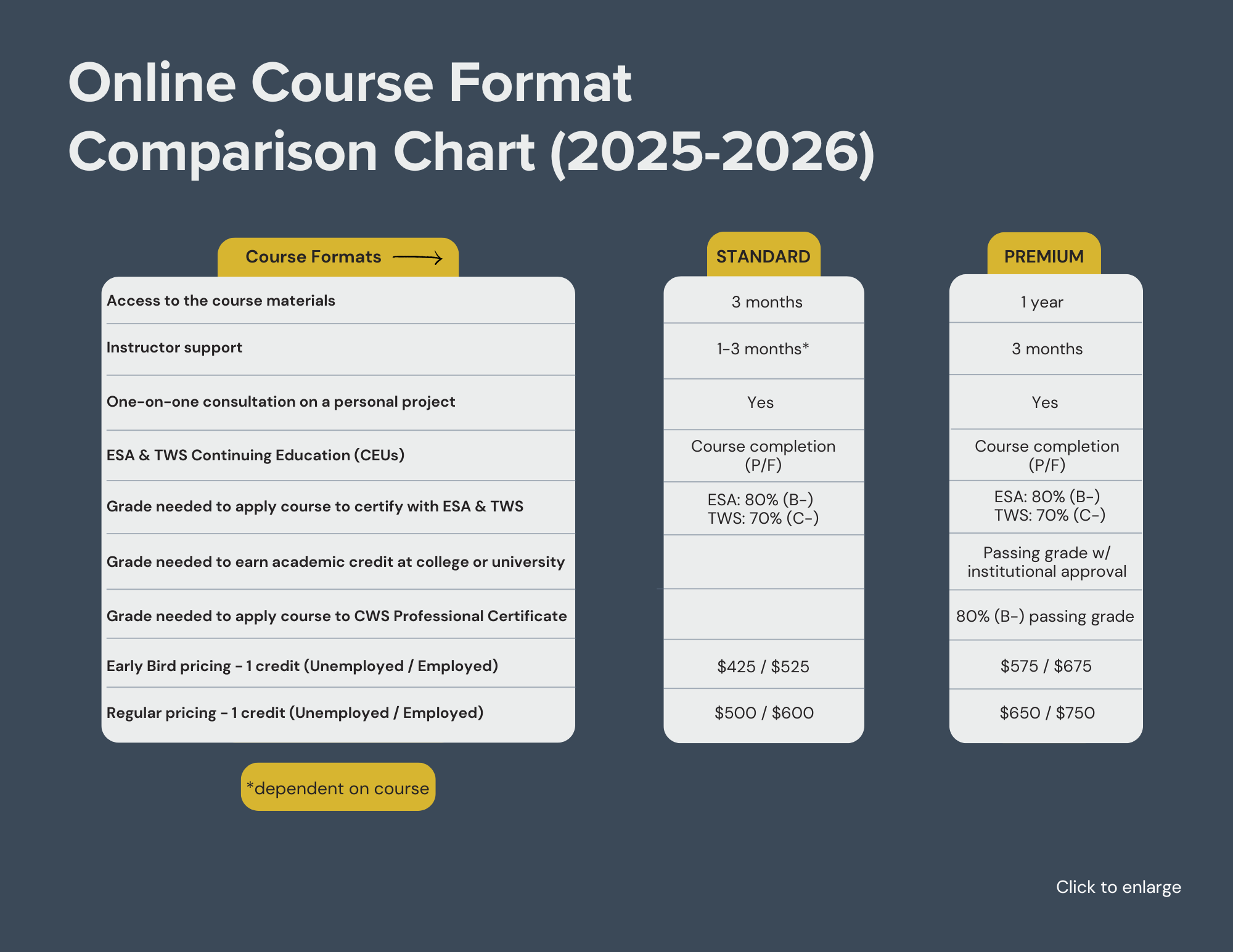-
This course offers an engaging and practical introduction to the dynamic field of science communication. Through a combination of hands-on activities and instructional learning, students will explore various strategies for effectively conveying scientific and conservation messages. They will learn how to identify key challenges in their field, develop targeted communication strategies, and create compelling materials to support their goals. Throughout the course, students will design and refine their own science communication impact campaign, ensuring they leave with a concrete, actionable plan to implement in their work.
-
Learn at your own pace with instructor support (see Online Course Format Chart below for details).
Spring: March 2 – May 24, 2026 (Early bird ends February 1st)
*Early bird saves $75
-
Basic understanding of ecological and conservation practices. Basic understanding of social media and basic understanding of Google products.
-
Module 1: The basics of science communication and storytelling
Define what science communication is and why it is relevant to conservation impact
Develop compelling conservation stories using storytelling frameworks
Identify good and poor practices within science communication
Create an original story using common storytelling techniques
Module 2: Methods of Science Communication
Identify a specific conservation challenge in their real-world line of work
Identify a specific audience
Design impact measuring tools and survey methods/Use qualitative and quantitative methods to assess the effectiveness of communication efforts.
Design a theory of change
Identify the means in which to pitch and effectively pitch science communication projects to media outlets and journalists
Module 3: Finalizing the roadmap to your own science communication product
Synthesize key concepts from the course, including storytelling, audience identification, impact measurement, and the theory of change.
Develop an actionable communication plan tailored to their work, ensuring they can immediately apply their skills to real-world conservation efforts.
COURSE OPTIONS & INFORMATION (Review chart above, then click below)
-
FORMAT:
3 months of access to course materials as you work at your own pace
Get instructor support for the 3-month term via email, discussion threads, group meetings, and one-on-one appointments
After working through the course materials, set up an optional meeting with the instructor to discuss your own personal project from work or school
CONTINUING EDUCATION:
16 CEUs with The Wildlife Society
CERTIFICATIONS:
Earn 1 credit toward certification as an Associate/Certified Wildlife Biologist® (at any level) with The Wildlife Society
-
FORMAT:
12 months of access to course materials as you work at your own pace
Get instructor support for the 3-month term via email, discussion threads, group meetings, and one-on-one appointments
After working through the course materials, set up an optional meeting with the instructor to discuss your own personal project from work or school
CONTINUING EDUCATION:
16 CEUs with The Wildlife Society
Go to our Continuing Education Page for more details
CERTIFICATIONS:
Earn 1 credit towards a professional certificate in Conservation Planning with CWS
Earn 1 credit toward certification as an Associate/Certified Wildlife Biologist® (at any level) with The Wildlife Society
ACADEMIC CREDIT:
Earn 1 academic credit (go to our Academic Credit Page for details)
Earn an additional 1-2 academic credits with an Applied Project
INSTRUCTOR
SCHOLARSHIPS
Full scholarships are available to participants from countries designated as “lower income” and “lower middle income” in the World Bank List of Economies. Please see our CWS World Scholars Program page for details.
CANCELLATION POLICY
Cancellations 30 days or more before the start date are not subject to cancellation fees. Cancellations <30 days before the start date are subject to a 50% cancellation fee. No refunds once the course begins.




